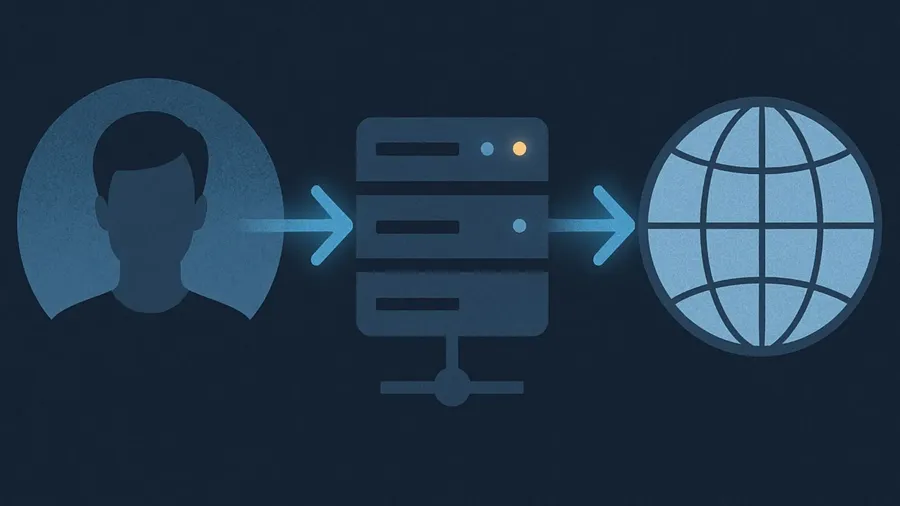Residential Proxies and Datacenter Proxies, A Comprehensive Review

The growth of web-based enterprises has created a pressing need for systems that allow individuals to manage, conceal, or replicate their internet presences.
Proxies have emerged as one of the most central of these systems. Although there are various kinds, residential proxies and datacenter proxies are the most used, both in commercial enterprises and in professional expert environments.
Though initially it might appear that they provide the same service—routing traffic through an intermediary to mask the user’s original IP address—sources, behavior, and effect differ so widely that to equate them obfuscates the very specific reasons they are useful in varying contexts.
Comparing these two types of proxies requires a journey step by step through their infrastructure, network behavior, performance capacity, and ease of detection.
It is only after such examples that it becomes possible to understand why one type of proxy may be better suited in one given situation and woefully inadequate in another.
It also explains why organizations that use proxy infrastructure almost never limit themselves to a single solution but instead combine both into more comprehensive strategies based on what they are trying to achieve.
Sources of IP Addresses and Infrastructure

The foundation of the disparity lies in how the different types of proxies receive their IP addresses. Residential proxies, a category of proxies from the same family as residential IP VPNs, directly relate to the structure of Internet Service Providers’ architecture.
Each IP is associated with a physical location—a consumer device or an individual’s home—and thus, any request that goes through it seems to be from an ordinary internet subscriber. Traffic from a home proxy blends in with the daily work of millions of legitimate humans browsing the internet, shopping online, or streaming content.
For instance, one can pick a US residential proxy to appear connected as if from a household in the USA.
Datacenter proxies, however, bypass the consumer internet completely. Their IPs are allocated by cloud hosting providers or large-scale server farms. Instead of representing a household, they represent rows of top-of-the-line computers within managed data centers.
While this setup provides phenomenal access to availability and speed, it disallows the proxy of any physical presence or natural link to an ISP. To the website, the request looks like it is originating from a block of data centers and not a regular user. This source is precisely why savvy detection systems label them earlier.
Each class’s underlying infrastructure also influences reliability. Residential proxies depend on consumer-grade links and are held back by the whims of those links: spotty speeds, periods of unavailability, or saturation when usage is high.
Datacenter proxies leverage the engineered reliability of enterprise networks, generally housed in facilities designed to provide consistent throughput and redundancy.
Performance Characteristics and Their Consequences
Performance metrics are typically what lead the charge when companies are comparing proxy options. Datacenter proxies always outperform residential proxies when it comes to speed, reliability, and scalability.
Optimized routing on enterprise-class infrastructure, datacenter proxies are built to deal with high-volume requests with low latency. For applications where latency directly contributes to inefficiency or missed opportunities—such as high-frequency data scraping or automated load testing—this speed advantage is priceless.
Home proxies, therefore, sacrifice some of this performance advantage to ensure authenticity. Operating through real home devices means that the requests they carry are subject to the typical constraints of consumer connections.
Bandwidth fluctuations, latency spikes, and asymmetric throughput are all included. But precisely because they inherit these imperfections, they simulate the standard traffic of a regular user accessing a page. This similarity is important primarily if avoiding detection is more vital than speedy delivery.
The trade-off, then, is not between fast and slow, but between engineered efficiency and natural variability.
Organizations for which making large-scale automation feasible are willing to tolerate higher detection risk from datacenter proxies in order to maintain the operation efficiently. Organizations that have sensitive operations—where one block would make months of work worthless—bear slower connections for more trustworthiness.
Detection and Resistance to Blocking
Modern websites use more sophisticated detection methods. These clients monitor incoming traffic for patterns that suggest automation rather than human interaction.
Uniform speed, multiple hits in a row, or the absence of typical residential indications will typically raise an eyebrow. It is where the distinction between residential and datacenter proxies becomes apparent.
Datacenter proxies, on the account of their homogeneity, are relatively easy to detect because their IP blocks usually appear in lists security teams maintain. Sites simply blacklisted the entire data center blocks to minimize visits from the data centers.
Even in the absence of precompiled lists, behavioral techniques can discover their homogeneity in the requests further pointing out that these are artificial.
Residential proxies are resistant to these kinds of detection. Their IPs originate from real ISPs and are blended into pools of genuine user traffic.
A request routed through a residential proxy can’t be identified easily from one made by a legitimate customer after logging in remotely from home. This renders them really valuable when sites have strict anti-bot measures, such as online shops that don’t want automated shopping or streaming sites blocking out geo-restricted viewers.
What emerges is a spectrum: datacenter proxies are faster but more transparent, while residential proxies are slower but camouflaged within ordinary user behavior. The decision between the two is not merely technical but strategic, reflecting an organization’s tolerance for risk and the visibility it can afford in the digital environment.









